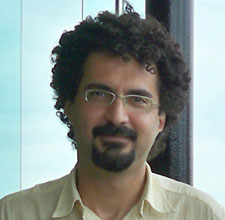APS Profile Details

Kamel Fezzaa
Physicist
Imaging Group • X-ray Science DivisionContact
- Argonne National Laboratory
- 9700 S. Cass Ave
- Building 438 - B008
- (630) 252-3638
- Cell: 630)252-1732
- -/-
Fezzaa K. and Wang Y. "Ultrafast X-Ray Phase-Contrast Imaging of the Initial Coalescence Phase of Two Water Droplets," Phys. Rev. Lett. 100, 104501 (2008).
Wang Y., Liu X., Im K-S., Lee W-K., Wang J., Fezzaa K., Hung D.L.S., Winkelman J.R. "Ultrafast X-ray study of dense liquid jet flow dynamics using structure tracking velocimetry," Nature Physics 4, 305 - 309 (2008).
Wang Y., Im K-S. and Fezzaa K. "Similarity Between the Primary and Secondary Air-assisted Liquid Jet Breakup Mechanisms," Phys. Rev. Lett. 100, 154502 (2008).
High-Speed X-ray Imaging
Using the special operation (hybrid) modes of the APS, the High Speed Imaging (HSI) technique takes advantage of the time structure of the filling pattern in the storage ring achieving exposure times set by the natural width of the x-ray pulses (down to 150 ps) and frame rates set by bunch repetition frequency (up to 271 kHz). These make this instrument a unique research tool for studying transient phenomena in hard and soft condensed matter, in systems far from equilibrium, including materials under extreme conditions (stress, heat, etc), failure of materials on impact, and the self-propagating exothermic reactions in metallic multilayers. In addition to phase-contrast imaging, other complementary techniques (such as diffraction and stereo-imaging) are being developed in order to be used simultaneously when adequate.
K. Fezzaa has been leading the HSI program, developing the capability and establishing and collaborating with a broad user community. Recently the coalescence singularity of two water drops theory was revisited after measurements at 32-ID [Fezzaa K. et al. PRL 100, 104501 (2008)]. Understanding the coalescence mechanism of liquid drops is critical to many fields from biology to fluid dynamic and also relates to a variety of practical problems in industry. Other research topics led by K. Fezzaa include fluid and fluid-like (flow) dynamics, in pure liquids such as water and fuels, in mixtures such as slurries and polymer solutions, or in complex materials such as sands.
Researchers from Pohang U. recently used this instrument to understand the effect of air bubble size on the formation of liquid jets that are relevant to climate, health and industry [J. S. Lee et al., Nature Comms, DOI: 10.1038 (2011)]
